By Emmy Malak (AERA archaeologist and object registrar)
Mysteries and puzzles can be very exciting, especially when it comes to understanding the lives of the ancient Egyptians. When I started working at Heit el-Ghurab (HeG) nine years ago, I was puzzled by the artefacts of the site. At first, most of the artefacts looked like broken stones.
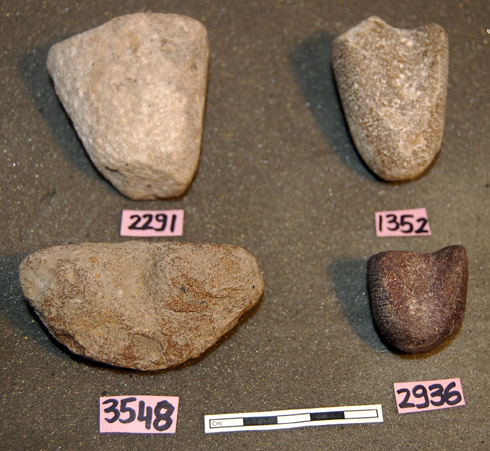
Just broken stones? A closer look shows these are drill stones indicating the crafting of stone vessels at the Heit el-Ghurab settlement. Photo by Emmy Malak.
When I was told that such stones were tools, I could not understand how they could have been used. But after a lot of training, reading about stone tools, and looking at parallels, despite the publishing and displaying of mostly complete tools in books and museums, I was better able to identify and classify the stone artefacts of HeG.
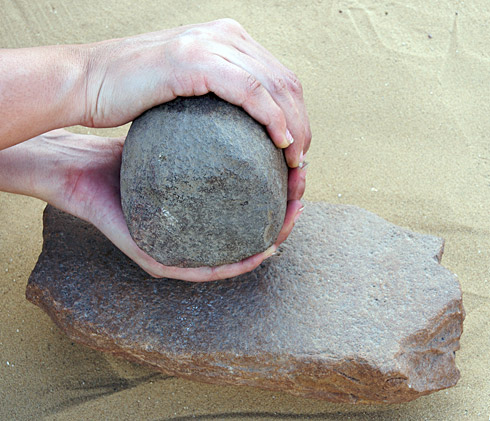
Learning to look for traces of use-wear takes time! A grinder and quern from the Heit el-Ghurab settlement. Photo by Jason Quinlan.
I trained to look for working and/or worked surfaces of a stone. By studying the artefacts of HeG, one can better understand the daily life of the average ancient Egyptian.
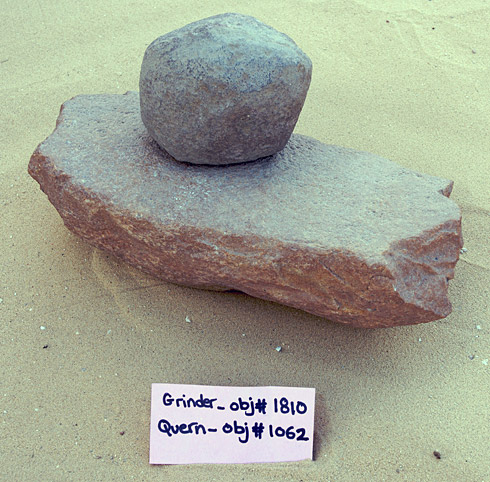
A hand-held grinder (mano) and base stone (quern or metate) from the Heit el-Ghurab settlement. Most likely for grinding grain into flour also some grinders were also used for grinding pigments. Photo by Jason Quinlan.
The corpus of finds from HeG varies greatly from small, fragile objects to big, heavy ones. Amongst the different categories found at the site are personal adornments objects, like beads and bracelets, household items, like headrests and tables, statue fragments, and others, while tools are the dominant finds of the site. The different tools and crafts vary from weaving tools to grinding tools, construction tools, drilling and fishing activities, amongst many more, not to mention some mysterious and overlapping categories of artefacts such as limestone balls, which could have been used either as gaming pieces or for accounting, and our main mysterious objects – lentoid shaped re-cut pottery sherds. Nearly all of the artefacts found are fragmented and/or are no longer in a useful condition.
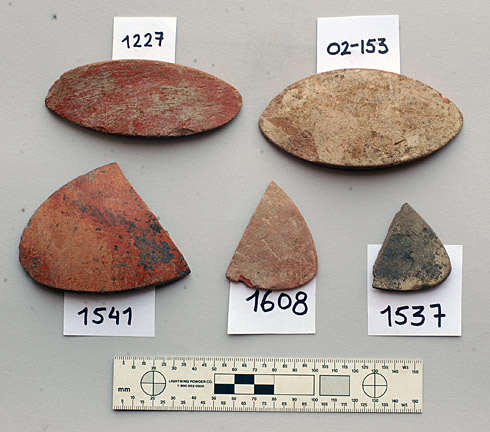
Fragments of pottery vessels were re-cut into lentoid shaped tools. This remains our main category of ‘mystery objects’. Photo by Yukinori Kawae.
By analyzing the artefacts of the site, we were able to understand that grinding took place on certain areas of the site. We were surprised to find a few drilling and weaving tools. The drilling of stone vessels, whether for the daily use of the elites or for funerary purposes also took place at some areas of site. Sometimes I think that almost everyone on site wore beaded bracelets and/ or necklaces due to the abundance of beads (faience beads of different shapes win the first place in the total number of artefacts found).
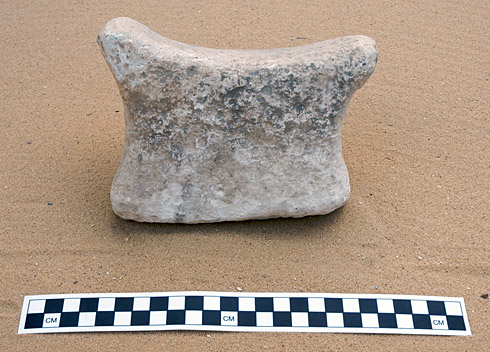
Daily life objects can be surprising – this is a head-rest, used to support the head while sleeping instead of a pillow! Limestone object from Heit el-Ghurab. Photo by Jason Quinlan.
Further studying is required in order to understand and recognize more about the details of the ancient daily life. It is amazing how simple, fragmented stones can tell us a great deal about a person’s life, especially when the lives of the average ancient Egyptian are still obscure to us.
